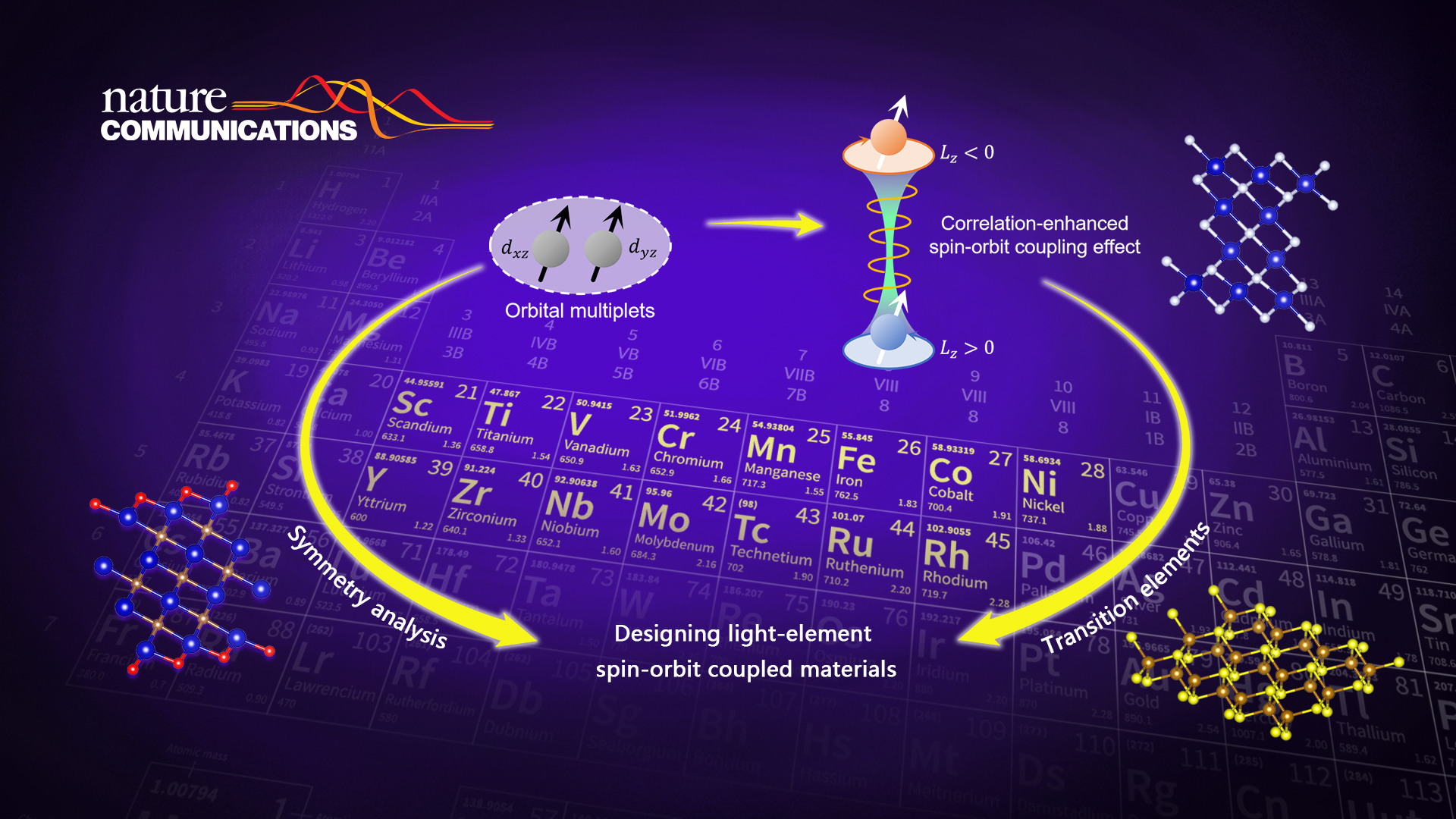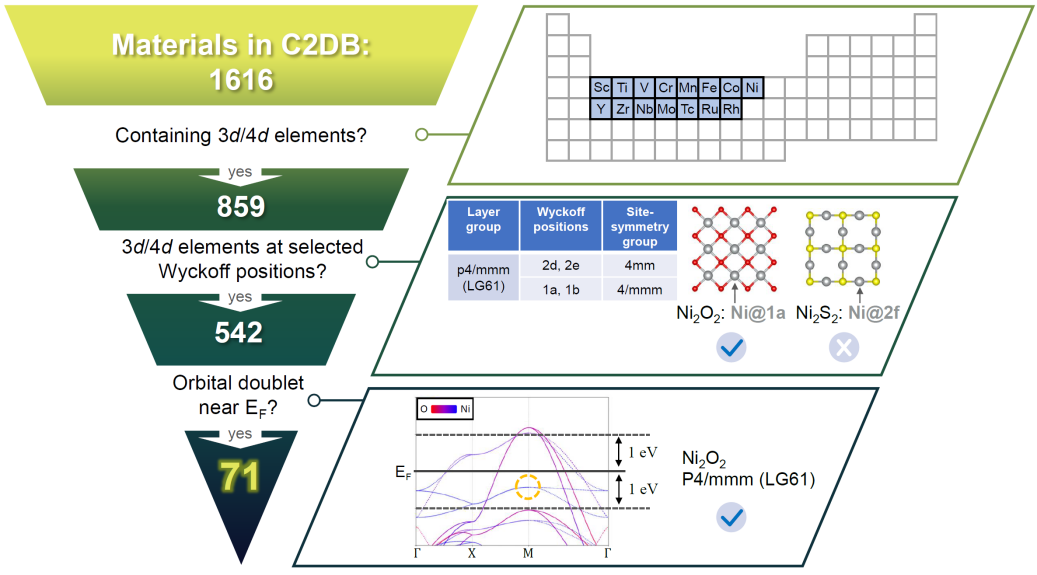Associate Professor Qihang Liu’s research group of the Shenzhen Institute for Quantum Science and Engineering (SIQSE) and the Department of Physics at the Southern University of Science and Technology (SUSTech), in collaboration with Professor Xiangang Wan at Nanjing University, has made substantial progress in the field of designing light-element materials with correlation-enhanced spin-orbit coupling effect. Their research results were recently published in the top journal Nature Communications, entitled “Designing light-element materials with large effective spin-orbit coupling”.

Spin-orbit coupling, as a relativistic effect, is central to the study of phenomena such as magnetocrystalline anisotropy, noncollinear magnetism, spin Hall effect, spin-orbit torque, etc. It is also closely related to the frontier directions, including spintronics, orbital electronics, and topological matter states. Because of the quadratic power dependence of spin-orbit coupling energy on atomic number, materials composed of heavy elements (e.g., Bi, Sb, Pb, Pt) have been naturally chosen as a platform to realize these unique effects. However, the naive criterion of choosing only heavy elements strongly compresses the available material pool. Additionally, weaker chemical bonding energies of heavy elements make the corresponding materials exhibit general instabilities, further rendering some of them toxic. Therefore, the question of whether appreciable spin-orbit coupling effects can be obtained in light-element materials has attracted attention.
Previously, researchers have qualitatively suggested that electron correlation effects favor the localization of electrons in energy bands to strongly feel the on-site spin-orbit coupling. Yet, this qualitative view lacks quantitative application. In early 2008, it was proposed that, in the nonmagnetic correlated material Sr2RhO4, the Coulomb interaction between orbital electrons could enhance the spin-orbit coupling effect by increasing the spin-orbit polarization. The resulting extra energy band splitting solved the discrepancy between experimental and computational Fermi surfaces. This theory provided new insights into the quantitative study of correlative interaction-enhanced spin-orbit coupling effects.
In this research, Qihang Liu’s group further investigated the mechanism of the spin-orbit coupling effect enhanced by electron correlation in spin-split 3d transition metal materials. It was found that the spin-orbit coupling effect is proportional to the orbital polarization in the specific partially-occupied orbital multiplets. In the mean-field level, the orbital polarization, spin-orbit coupling effect, and even the topological band gap, are enhanced by the Coulomb repulsion between the degenerated orbitals. Based on the mechanism, the group proposed the design principles for light element materials with strong spin-orbit coupling effects: the space group of 3D materials or the layer group of 2D materials and the corresponding Wyckoff positions need to have high enough symmetry to allow specific orbital multiplets; the transition metal atoms with strong electron correlation effects need to be located at the corresponding Wyckoff positions.
The researchers screened out 24 from 32 point groups allowing specific d orbital multiplets, which exist in 125 space groups and 32 layer groups. This symmetry requirement can be used to predict whether a material has the spin-orbit coupling effect enhanced by correlation effects. To show the efficiency of the process, the group used the design principles combined with the high-throughput DFT calculation to comprehensively screen 71 light element materials with correlation-enhanced spin-orbit coupling effect from the Computational 2D Materials Database (C2DB) (Figure 1). Meanwhile, they further obtained nine quantum anomalous Hall insulators with large band gaps in 71 materials. Compared with the previous case studies, this work provides a new avenue for the systematic design of high-temperature quantum anomalous Hall insulators.

Figure 1. Screening 2D materials with correlation-enhanced spin-orbit coupling effect in the database
Ph.D. student Jiayu Li and Research Assistant Professor Qiushi Yao of the Department of Physics at SUSTech, and Ph.D. student Lin Wu of the School of Physics at Nanjing University are the co-first authors of this paper. Associate Professor Qihang Liu at SUSTech and Professor Xiangang Wan at Nanjing University are the corresponding authors. SUSTech is the first affiliation of this paper.
This research was supported by the National Natural Science Foundation of China (NSFC) and the Key R&D Program of the Ministry of Science and Technology (MOST).
Paper link: https://www.nature.com/articles/s41467-022-28534-y
To read all stories about SUSTech science, subscribe to the monthly SUSTech Newsletter.
Proofread ByAdrian Cremin, Yingying XIA
Photo By